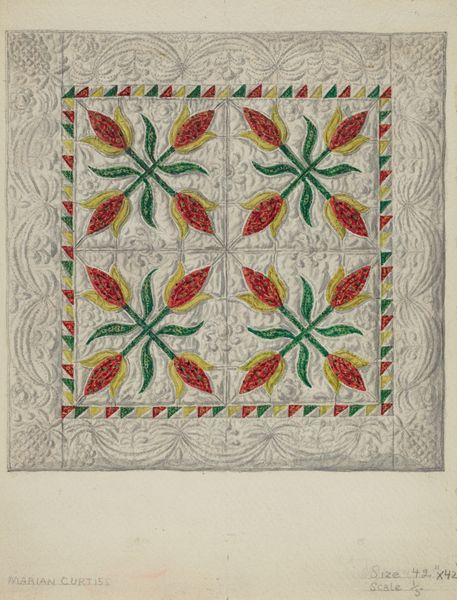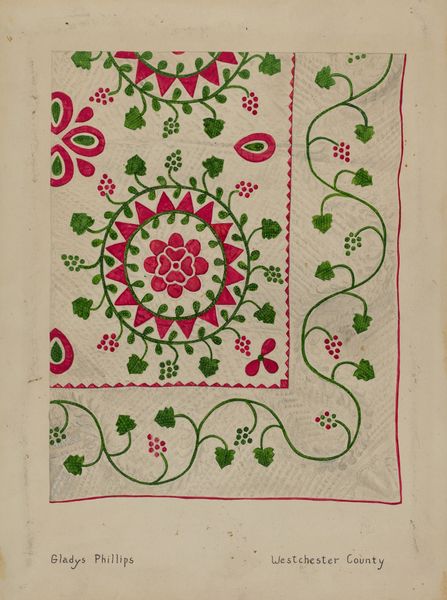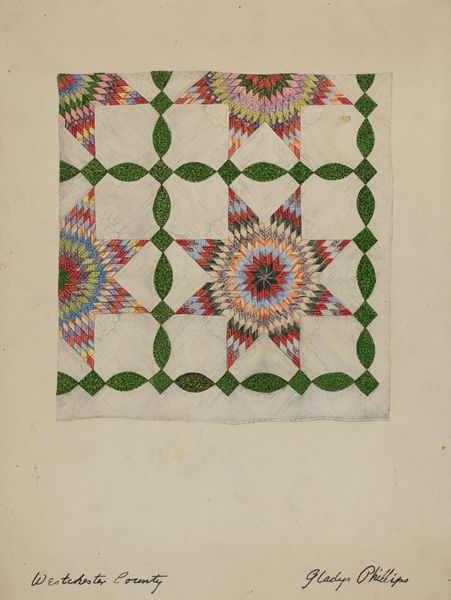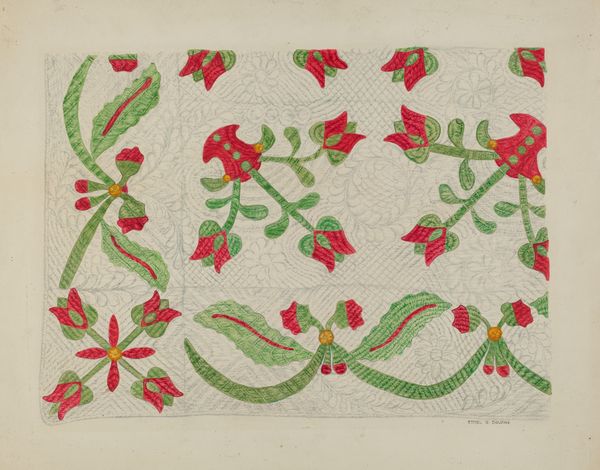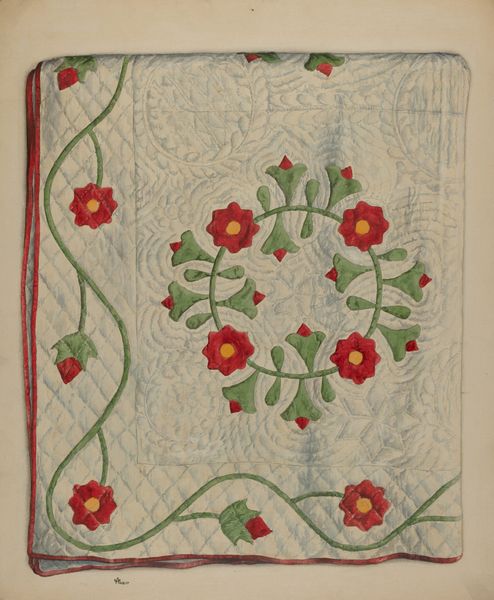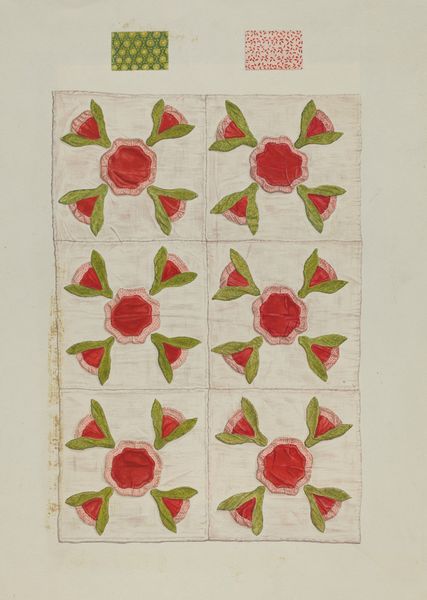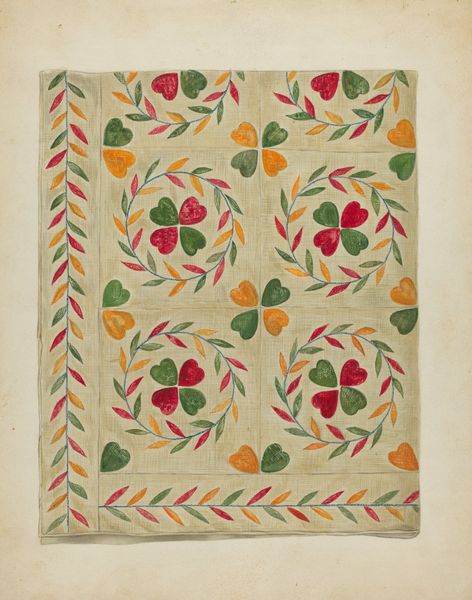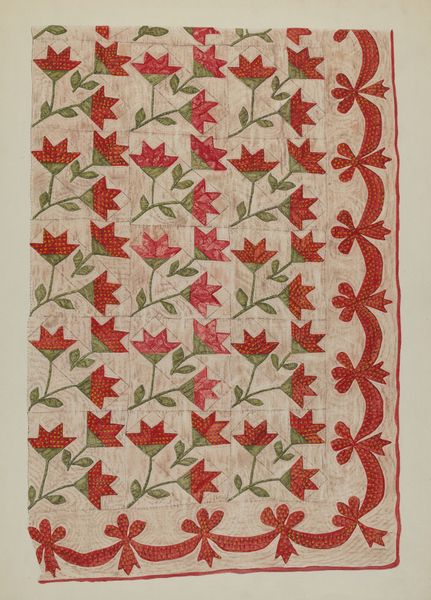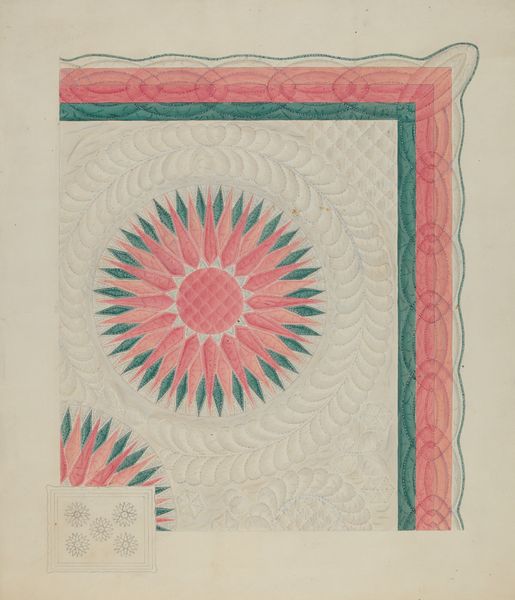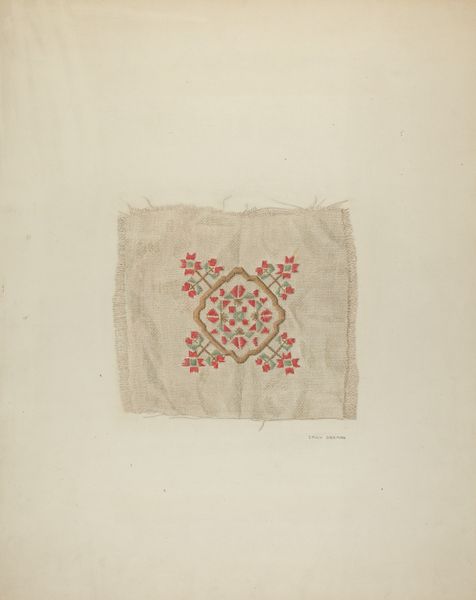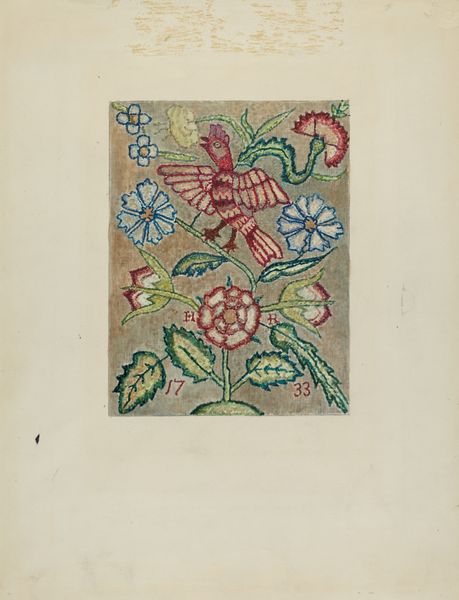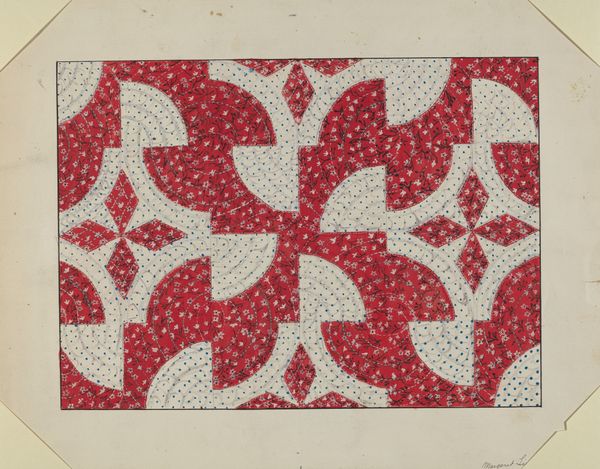
drawing
#
drawing
#
aged paper
#
toned paper
#
light pencil work
#
ink paper printed
#
personal sketchbook
#
linocut print
#
sketchbook drawing
#
watercolour illustration
#
sketchbook art
#
watercolor
Dimensions: overall: 35.7 x 28 cm (14 1/16 x 11 in.) Original IAD Object: 98" long; 98" wide
Copyright: National Gallery of Art: CC0 1.0
Editor: So, here we have Madeline Arnold’s "Applique Quilt" from around 1936, rendered with drawing and watercolor. There's a striking yet subdued quality to the piece, particularly in the repetitive floral design. What jumps out at you? Curator: I'm drawn to the labor embedded within. While presented as a drawing, its title points directly to the domestic craft of quilting. The meticulous detail, replicating the stitched texture and floral pattern, speaks to the artist’s awareness of material processes and the social context of "women’s work." Think about the materials, typically textiles; how does transforming them into a watercolor shift our perception of value and artistry? Editor: That's fascinating. I hadn’t considered the shift in medium itself as a commentary. So, by depicting a quilt – traditionally ‘craft’ – in watercolour, is she elevating its status? Or questioning the separation of fine art from the everyday? Curator: Precisely! It blurs those boundaries. What about the intended function of a quilt versus this static representation? Quilts provide warmth, comfort, and are often imbued with personal stories and familial connections. What happens when this utility is removed, and we are left with an image? How might its meaning change in the domestic versus a gallery setting? Consider too how materials shape cultural value judgments; think the cost of production and consumption within a socio-economic framework. Editor: I see. So the work prompts questions about production, value, and even the role of art in reflecting and shaping our understanding of labor and domestic life? Curator: Exactly! It’s not merely a pretty floral design. It encourages us to think critically about the hierarchies inherent in art and craft, and the social implications of the materials and processes involved. Editor: This really shifts my perspective; it is much more than a simple design, it’s loaded with social commentary about the value of craft and labor. Curator: Indeed. It's about questioning the systems of value we often take for granted.
Comments
No comments
Be the first to comment and join the conversation on the ultimate creative platform.
